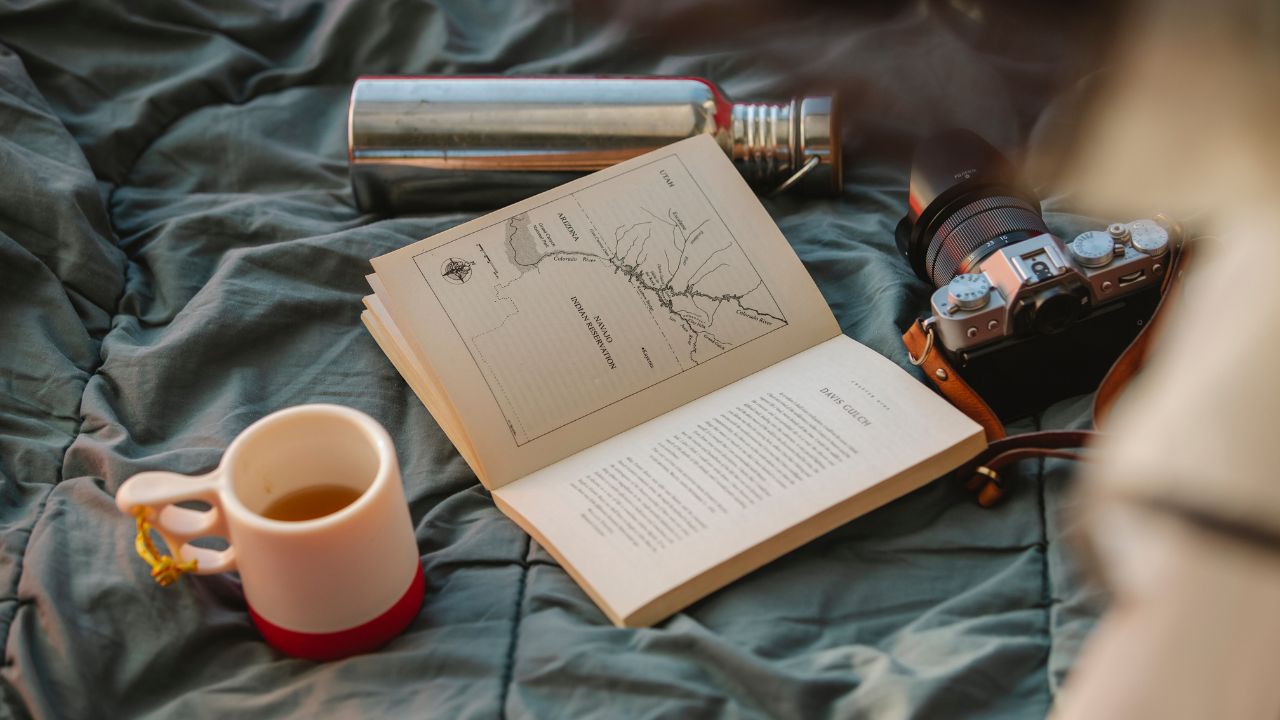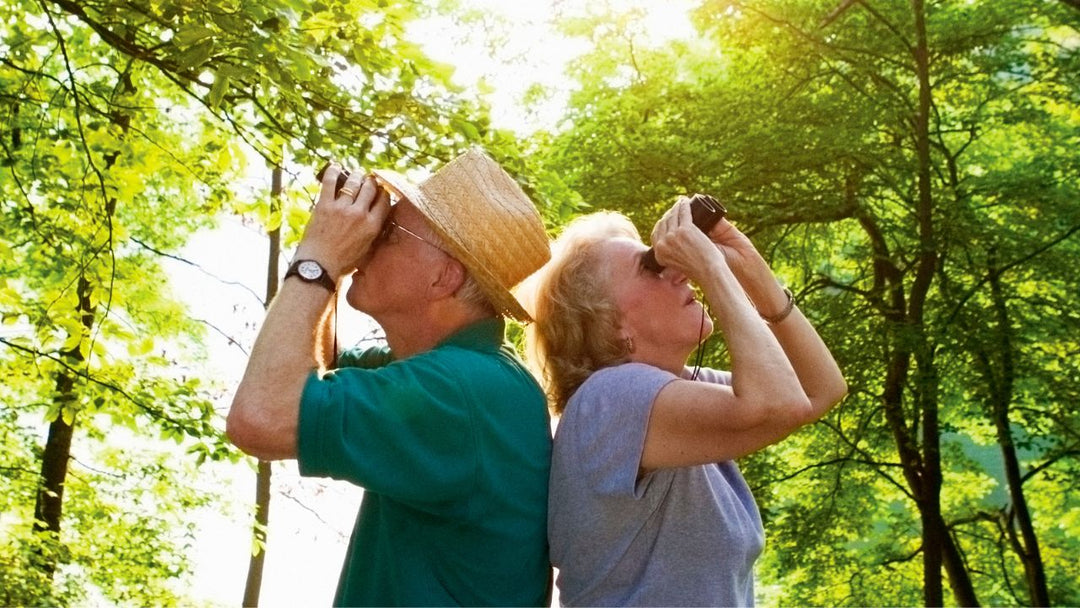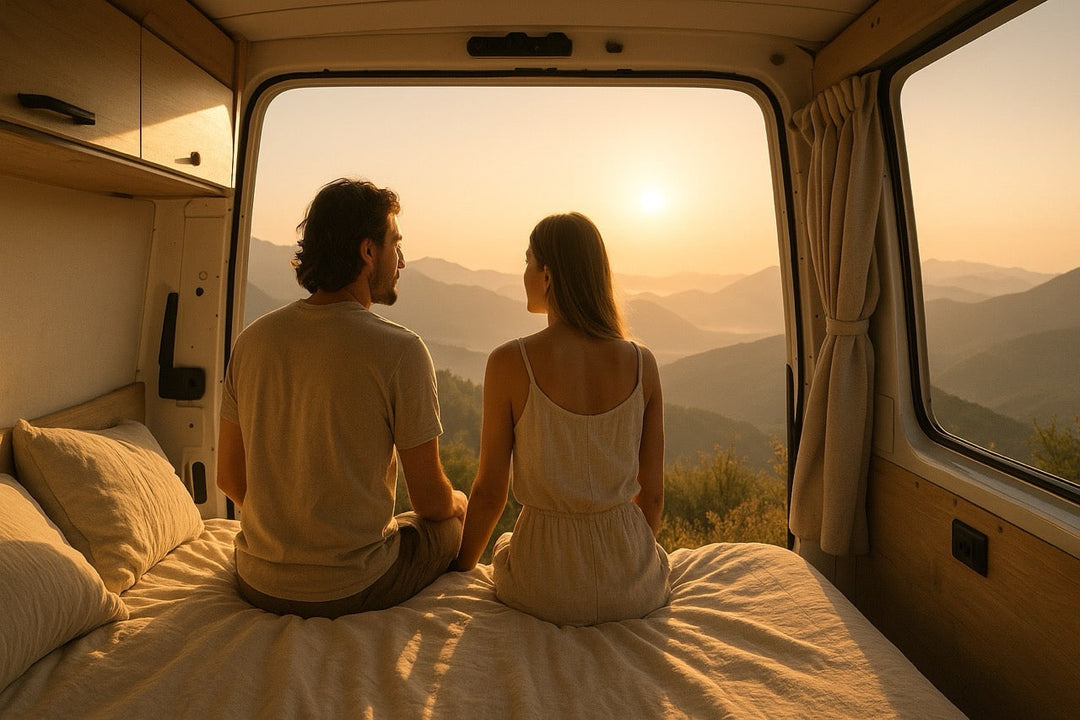Camping is a wonderful way to reconnect with nature and unwind from the stresses of everyday life. However, without proper preparation and organization, a camping trip can quickly turn into a stressful experience. That's where camping hacks come in handy. You can make your camping adventure more enjoyable and hassle-free by utilizing smart tips and tricks.
From packing efficiently to setting up your campsite with ease, these camping hacks will ensure that you have a stress-free outdoor experience. One essential tip is to pack a merino wool base layer for your trip. Merino wool is excellent for regulating body temperature, providing warmth without bulk, and wicking away moisture to keep you dry. Whether you’re a seasoned camper or a novice adventurer, wearing a merino wool base layer will help you stay comfortable in varying weather conditions, making your camping experience even more enjoyable.
Pre-Trip Planning Hacks
1. Checklist Essentials
A successful camping trip relies on having a thorough checklist. A detailed list ensures you won’t forget any essentials, from your tent and sleeping bags to food supplies and cooking gear. Divide your checklist into categories like shelter, clothing, cooking, safety, and personal items. This will help you systematically pack and reduce the chances of leaving something important behind.

One pro tip is to create a master checklist that you can reuse and update for each camping trip. Store it digitally on your phone or print out a laminated copy that you can tick off with a dry-erase marker. Over time, you’ll refine this list to suit your personal preferences and camping style, making each subsequent trip easier to prepare for.
2. Weather Forecasting Tips
Checking the weather forecast is crucial for planning any camping trip. While this might seem like an obvious step, it’s essential to dig deeper than just the basic temperature and precipitation predictions. Look for extended forecasts and check multiple sources to get a comprehensive view of what to expect. Read More Expert Tips for Camping in the Rain.
It’s also wise to prepare for unexpected weather changes by packing versatile clothing and gear. Consider bringing a lightweight tarp to create an extra shelter if rain is predicted or packing extra layers for sudden temperature drops. Being prepared for all weather scenarios ensures you’ll stay comfortable and safe throughout your adventure. Read More Tips for Hiking in the Rain.
3. Multi-Use Gear Ideas
Less can be better when packing for a camping adventure. Opt for multi-use gear that can serve multiple purposes, which will save you space and reduce the overall weight of your pack. For example, a bandana can be used as a washcloth, a headband, a pot holder, or even a makeshift sling in case of injury. A quality multi-tool can replace the need for multiple individual tools, providing you with essentials like a knife, can opener, and screwdriver in one compact device.
Additionally, consider investing in gear that combines functionality, such as a sleeping bag that doubles as a blanket or a camping stove that also serves as a heater. This approach to packing not only lightens your load but also simplifies your camping experience by reducing the number of items you need to keep track of.
4. Space-Saving Techniques
Space is always at a premium when packing for a camping trip, especially if you’re heading out on a backpacking adventure. One effective space-saving technique is to roll your clothes instead of folding them. Rolling not only reduces wrinkles but also allows you to fit more items into your pack. You can also use compression bags to further reduce the volume of your clothing and other soft items.
Another hack is to nest smaller items inside larger ones. For example, you can store your cooking utensils inside your cooking pots or stash your toiletries inside your shoes. This method maximizes the use of space and keeps your gear organized. Consider using collapsible containers for items like water bottles, bowls, and storage bins, which can be flattened when not in use to save even more space.
5. Quick Tent Setup Tips
Setting up your tent quickly and efficiently can be a game-changer, especially if you arrive at your campsite late or in bad weather. Start by practicing setting up your tent at home before your trip so you’re familiar with the process and any potential challenges. Once you arrive at your campsite, make sure to choose a flat, dry area that is clear of rocks and debris. Lay down a ground tarp to protect the bottom of your tent from moisture and sharp objects.

When setting up the tent, stake down the corners first to keep it in place, especially in windy conditions. Then, assemble the poles and attach the tent body, ensuring the fabric is taut to prevent sagging. Speed up your tent set-up by utilizing color-coded poles and clips if they are a feature of your tent. Finally, secure the rainfly and make sure all the zippers are closed to keep out bugs and rain.
6. DIY Camping Furniture
Creating your own camping furniture can add a touch of comfort and convenience to your campsite without the need for bulky equipment. One easy DIY project is to make a camping stool using sturdy branches and a piece of fabric or canvas. Simply lash the branches together to form a tripod and attach the fabric as a seat. This lightweight and portable stool can be used around the campfire or as a makeshift table.
Another hack is to use logs, rocks, or other natural materials to create seating, tables, or cooking platforms. For example, you can arrange a circle of logs around your campfire for seating or stack flat rocks to create a stable cooking surface. These DIY solutions not only save space but also allow you to customize your campsite to your needs.
Cooking and Food Hacks
1. Campfire Cooking Essentials
Cooking over a campfire is one of the most enjoyable aspects of camping, but it requires some planning and the right tools. Don't forget to include a cast iron skillet or Dutch oven in your packing list - they are multipurpose, strong, and ensure even cooking. These can be used for everything from frying eggs to baking bread. Bring along aluminum foil for wrapping food like potatoes, corn, or fish for easy, no-mess cooking directly in the coals.

For quick and easy meals, prepare ingredients at home, such as chopping vegetables or marinating meats, and store them in resealable bags. This will save time and reduce cleanup at the campsite. Don’t forget to pack a portable grill grate if your campsite doesn’t have one, as it allows you to cook over the fire without placing food directly on the flames.
2. Food Storage and Safety Tips
Proper food storage is essential to prevent spoilage and keep wildlife away from your campsite. Invest in a quality cooler with plenty of ice or ice packs to keep perishable foods cold. For longer trips, consider using dry ice to extend the cooling time. Store your cooler in a shaded area and keep it closed as much as possible to maintain the cold temperature.
To deter animals, store all food, trash, and scented items (like toothpaste and soap) in bear-proof containers or hang them from a tree at least 100 feet away from your sleeping area. This not only protects your food supply but also reduces the risk of attracting bears, raccoons, or other wildlife to your campsite.
Safety and Hygiene Hacks
1. First Aid Kit Essentials
It is essential to have a well-supplied first aid kit for any camping adventure. While pre-packaged kits are convenient, consider customizing yours to include items that cater to your specific needs and the environment you’ll be in. Essentials should include bandages, antiseptic wipes, gauze, adhesive tape, tweezers, and pain relievers. If you’re camping in a remote area, add a tourniquet, an emergency blanket, and a whistle for signaling.
It’s also important to include any personal medications, insect bite treatment, and allergy remedies. A small tube of super glue can be a lifesaver for sealing small cuts in a pinch. Keep your first aid kit in a waterproof container and store it in an easily accessible location so you can quickly grab it in an emergency.
2. Personal Hygiene Tips
You are maintaining hygiene while camping is essential for your health and comfort. Bring biodegradable soap and a small basin for washing your hands, face, and dishes. Use unscented baby wipes for a quick and easy way to clean up when water is scarce. For brushing your teeth, bring along a travel-sized toothbrush and toothpaste, and remember to spit out toothpaste at least 200 feet away from any water source.

To stay fresh during your trip, pack a quick-drying towel and change into clean clothes before bed. Consider bringing a portable shower if you’re camping for an extended period, or use a solar shower bag, which heats up water using the sun’s energy. If you’re camping in a cold environment, bring a set of thermal underwear to change into at night to stay warm and dry.
Different life hacks
1. Sleeping Bag Hacks
A peaceful night's sleep is key to a great camping experience. To make your sleeping bag warmer, line it with an emergency blanket, which reflects your body heat back to you. You can also fill a water bottle with hot water and place it at the foot of your sleeping bag to keep your feet warm throughout the night.
For added comfort, place a foam pad or inflatable mattress under your sleeping bag to insulate you from the cold ground and provide extra cushioning. If you’re camping in warmer weather, consider unzipping your sleeping bag and using it as a blanket. This allows for better ventilation while still providing warmth.
2. Camping Lighting Ideas
Good lighting can make your campsite more functional and enjoyable. Bring a headlamp for hands-free illumination, especially useful for setting up camp in the dark or finding your way to the bathroom at night. A lantern with adjustable brightness is perfect for lighting up your tent or picnic table.

Create a snug atmosphere by hanging battery-operated fairy lights around your campsite or tent. They provide soft, warm lighting and make your space feel more inviting. You can also use glow sticks or LED candles as low-light options that are safe and easy to use.
3. Bug Repellent Tips
Nothing can ruin a camping trip faster than being eaten alive by bugs. To keep mosquitoes and other pests at bay, pack a natural bug repellent made with essential oils like citronella, eucalyptus, or lavender. You can also burn sage or rosemary in your campfire, as the smoke from these herbs is known to repel insects.
For added protection, wear long sleeves and pants, and treat your clothing and gear with permethrin before your trip. Keep mosquitoes at bay by surrounding your camping space with citronella candles or mosquito coils. If you’re sleeping in a tent, ensure all windows and doors are securely zipped to keep bugs out.
4. Campfire Entertainment Ideas
Campfires are a central part of the camping experience, and they provide the perfect setting for some classic entertainment. Bring along a guitar or harmonica for a sing-along, or share ghost stories and personal anecdotes around the fire. For a fun group activity, pack a set of cards or a travel-sized board game.

If you’re camping with kids, plan some simple, fire-safe crafts like making s’mores or roasting marshmallows on sticks. You can also organize a stargazing session by downloading a star chart or astronomy app to identify constellations. These activities help create lasting memories and make your camping trip even more enjoyable.
Conclusion
With these best camping hacks, you’re well-equipped to enjoy a stress-free and memorable outdoor adventure. From pre-trip planning to campsite setup, cooking, safety, and entertainment, these tips will help you make the most of your time in nature.
As you prepare for your next camping trip, don’t forget to check out the high-quality gear available at Merino Protect. Their Merino wool products are perfect for staying warm, comfortable, and dry during all your outdoor adventures. By combining these hacks with the right equipment, you’ll be ready to tackle any challenge the wilderness throws your way.
FAQs About Camping Hacks for a Stress-Free Adventure
1. How Can I Keep My Tent Cool During Hot Weather?
To maintain a lower temperature inside your tent, position it in a shaded area and cover it with a reflective tarp. Ventilation is key, so keep windows and doors open to allow airflow.
2. How Do I Keep Bugs Away From My Campsite?
Citronella candles and essential oils like eucalyptus or lavender can repel bugs. Additionally, setting up a campfire can help keep insects at bay, as the smoke acts as a natural deterrent.
3. What’s a Simple Way to Organize My Camping Gear?
Use clear plastic bins to store and categorize your gear. Label each bin for easy identification. This way, you can quickly find what you need without rummaging through your entire setup.
4. How Can I Ensure I Stay Hydrated During My Camping Trip?
Bring a reusable water bottle with a built-in filter. This allows you to refill from natural water sources like streams or lakes, ensuring you always have access to clean drinking water.
5. What’s a Good Way to Keep Food Fresh Without a Cooler?
Freeze meals and drinks before you leave, and pack them in an insulated bag. Use frozen water bottles as ice packs; they’ll keep your food cold and provide extra drinking water as they melt.
6. How Do I Make My Sleeping Area More Comfortable?
Invest in an inflatable sleeping pad or air mattress for added comfort. Make sure to bring a compact pillow or use clothes in a stuff sack as a substitute for a pillow to ensure a good night's rest during your camping trip.
7. What’s an Easy Way to Light Up My Campsite at Night?
Use solar-powered lanterns or string lights. Throughout the day, they store power and then emit a bright light at night. Headlamps are also a great, hands-free lighting option for navigating in the dark.









Hinterlassen Sie einen Kommentar